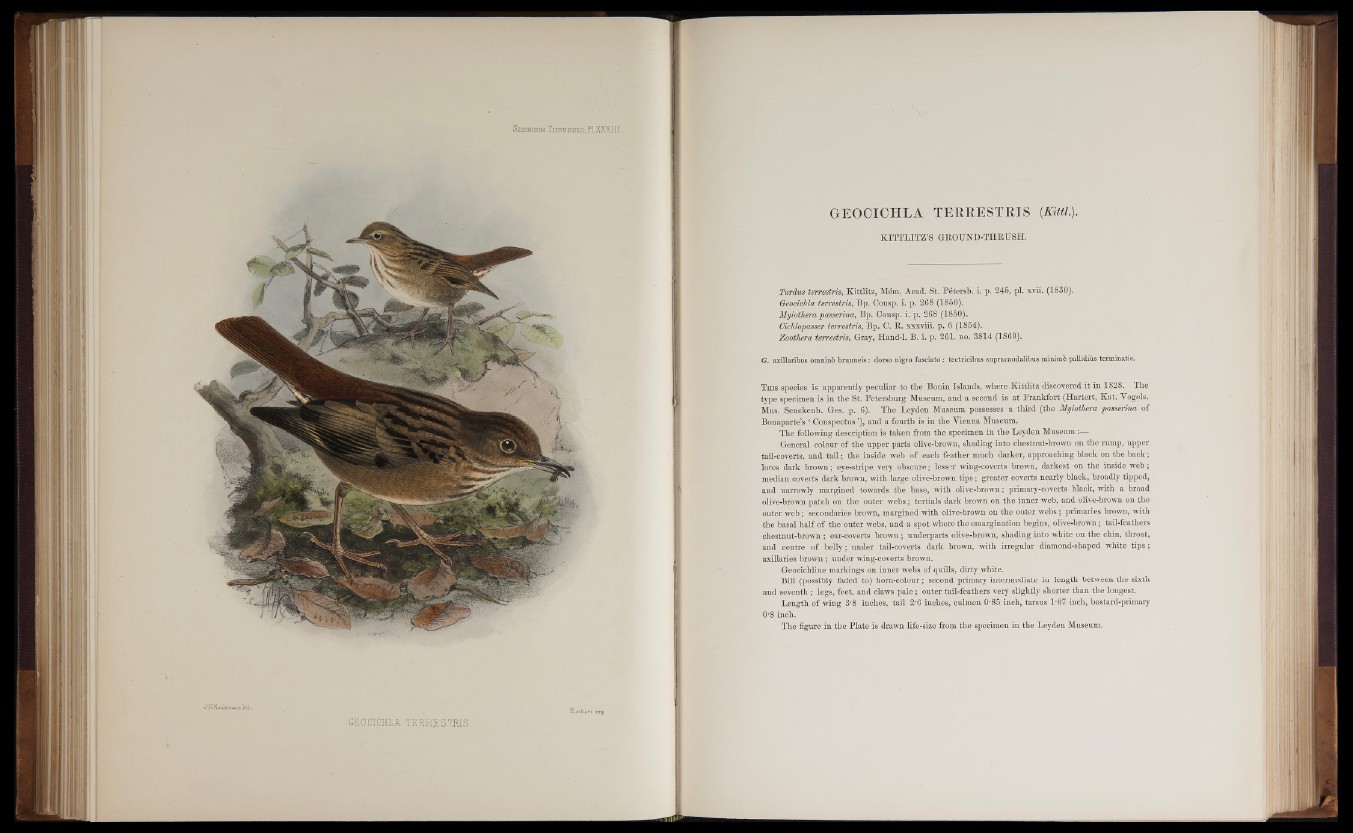
J'.fr.Keulemar.s litK.
H 0 EIG3ELA TERRE ITRIS.
GEOCICHLA TERRESTRIS [Kittl.].
KITTLITZ’S GROUND-THRUSH.
Turdus terrestris, Kittlitz, Mem. Acad. St. Petersb. i. p. 245, pi. xvii. (1880).
Geocichla terrestris, Bp. Consp. i. p. 268 (1850).
Myiotherapasserina, Bp. Consp. i. p. 268 (1850).
Cichlopasser terrestris, Bp. C. R. xxxviii. p. 6 (1854).
Zoothera terrestris, Gray, Hand-1. B. i. p. 261. no. 3814 (1869).
G. axillaribus omnino brunneis : dorso nigro fasciato : tectricibus supracaudalibus minimb pallidius terminatis.
T his species is apparently peculiar to the Bonin Islands, where Kittlitz discovered it in 1828. The
type specimen is in the St. Petersburg Museum, and a second is at Prankfort (Hartert, Kat. Vogels.
Mus. Senckenb. Ges. p. 6). The Leyden Museum possesses a third (the Myiothera passerina of
Bonaparte’s ‘ Conspectus ’), and a fourth is in the Vienna Museum.
The following description is taken from the specimen in the Leyden Museum:—
General colour of the upper parts olive-brown, shading into chestnut-brown on the rump, upper
tail-coverts, and ta il; the inside web of each feather much darker, approaching black on the back;
lores dark brown; eye-stripe very obscure; lesser wing-coverts brown, darkest on the inside web;
median coverts dark brown, with large olive-brown tip s; greater coverts nearly black, broadly tipped,
and narrowly margined towards the base, with olive-brown; primary-coverts black, with a broad
olive-brown patch on the outer webs; tertials dark brown on the inner web, and olive-brown on the
outer web; secondaries brown, margined with olive-brown on the outer webs; primaries brown, with
the basal half of the outer webs, and a spot where the emargination begins, olive-brown; tail-feathers
chestnut-brown ; ear-coverts brown ; underparts olive-brown, shading into white on the chin, throat,
and centre of belly; under tail-coverts dark brown, with irregular diamond-shaped white tip s ;
axillaries brown; under wing-coverts brown.
Geocichline markings on inner webs of quills, dirty white.
Bill (possibly faded to) horn-colour; second primary intermediate in length between the sixth
and seventh ; legs, feet, and claws pale; outer tail-feathers very slightly shorter than the longest.
Length of wing 3-8 inches, tail 2-6 inches, culmen 0*85 inch, tarsus 1-07 inch, bastard-primary
0*8 inch.
The figure in the Plate is drawn life-size from the specimen in the Leyden Museum.